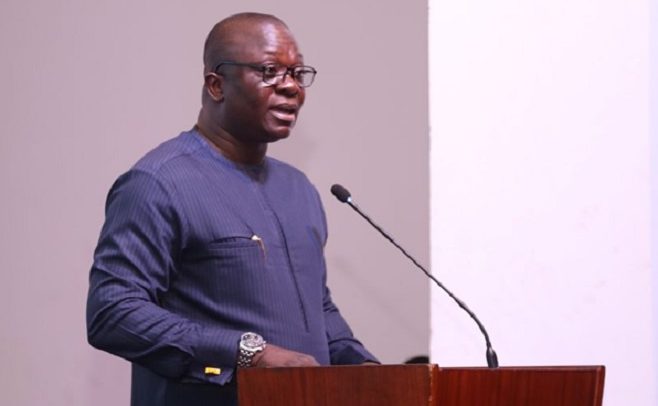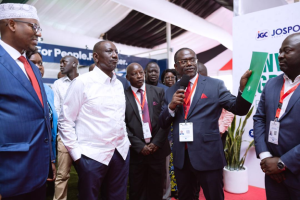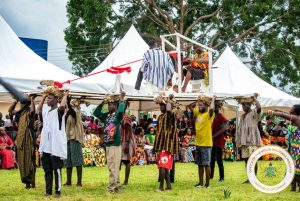
By Seade CAESAR
Over the past decade the UAE has become one of Africa’s most consequential maritime partners.
Two Abu Dhabi and Dubai based operators DP World and AD Ports Group now anchor long-term concessions, greenfield ports, inland logistics and special economic zones from the Atlantic to the Indian Ocean.
These hard assets aren’t just commercial bets; they are the backbone of emerging trade corridors (food, energy, minerals, and manufacturing) linking African producers to Gulf markets and global supply chains.
Anchor projects shaping corridors
Senegal: Dakar – Ndayane (Atlantic Gateway)
The Port of Dakar is West Africa’s traditional hub, but its location within the congested city has constrained expansion. DP World’s Ndayane project, valued at over US$1.1 billion, is designed to overcome these bottlenecks by providing deep-water access for the latest generation of container ships. Phase 1 includes an 840-meter quay and infrastructure to handle 366-meter vessels, while Phase 2 will expand capacity even further. Positioned as a transshipment and gateway port, Ndayane will serve as a launchpad for Senegal’s ambition to be a regional logistics and manufacturing hub, enhancing trade flows across ECOWAS and beyond.
Egypt: Sokhna and Logistics Park (Red Sea Manufacturing/Export Base)
DP World’s Sokhna terminal has become one of Egypt’s fastest-growing container gateways, setting a record throughput of 285,000 TEUs in Q1 2025. The port’s strategic location at the southern entrance to the Suez Canal Economic Zone (SCZone) allows it to function as a hub for regional exports and transshipment. Adjacent to the port, DP World’s Sokhna Logistics Park integrates warehousing, cold-chain facilities, and value-added services, enabling manufacturers to consolidate operations close to the port. This ecosystem reduces supply chain inefficiencies and positions Egypt as a Red Sea manufacturing and export powerhouse, while strengthening the UAE’s role in regional logistics.
Somaliland/Ethiopia: Berbera Corridor (Horn of Africa Alternative to Djibouti)
The Berbera port expansion, led by DP World, coupled with the development of the Berbera Free Zone, represents a transformative project for the Horn of Africa. Central to this strategy is the 240-250 km Berbera Wajaale Road, financed in part by the Abu Dhabi Fund for Development, which connects Somaliland’s coastline to Ethiopia’s landlocked interior. Ethiopia, Africa’s second most populous country, has long been reliant on Djibouti for maritime access. Berbera provides a crucial alternative, reducing overdependence and promoting regional competition. The corridor is increasingly viewed as both a commercial and strategic lifeline, boosting resilience for East Africa’s largest consumer market.
Tanzania: Dar es Salaam (Multi-Operator Model)
Tanzania’s Dar es Salaam port is the lifeline for six landlocked neighbors, handling bulk imports of fuel, fertilizer, and grain, as well as regional exports. In 2023, DP World entered a 30-year concession to manage multipurpose berths, while AD Ports Group secured a 30% stake in a new container terminal venture with 1 million TEU capacity. The model distributes operations between two UAE operators, combining financial muscle with technical expertise. While initially contested politically, the agreements are now delivering operational improvements, revenue growth, and efficiency gains. For Tanzania, Dar es Salaam’s modernization is central to its ambition of becoming a regional trade hub.
Mozambique: Maputo (Southern African Minerals & Agro Corridor)
Through its joint venture in MPDC, DP World has secured rights over the Port of Maputo until 2058, with a planned US$2 billion expansion pipeline. The port plays a critical role in exporting coal, chrome, and citrus from Mozambique, South Africa, and Zimbabwe. In May 2025, DP World launched a US$165 million project to double container handling capacity, responding to growing demand as South Africa’s ports struggle with congestion and inefficiencies. Maputo’s strategic location, supported by rail and road corridors into Gauteng and Limpopo, makes it a competitive alternative for Southern African exporters. It is emerging as a key regional trade bypass.
Angola & Congo-Brazzaville (Atlantic Growth Arc)
The UAE’s AD Ports Group has been expanding along Africa’s Atlantic seaboard, securing long-term concessions in Angola and Congo-Brazzaville. In Angola, the Luanda multipurpose terminal concession runs for 20 years, with phased upgrades through 2027, supporting both container and bulk cargo. In Pointe-Noire, AD Ports, alongside CMA CGM, is developing a new East Mole terminal under a 30-year concession, targeting 400,000 TEUs annually once operational in 2027. These projects aim to capture growing West-Central African trade flows, diversify Angola’s oil-dependent economy, and strengthen Pointe-Noire’s role as a regional transshipment hub. Collectively, they extend the UAE’s maritime footprint deeper into the Atlantic trade corridor.
How the UAE exerts influence beyond the quay wall
Long concessions and capex
UAE port operators typically secure 20-30-year concessions, providing the security to inject billions in capital expenditure. This long horizon allows for building deeper channels, longer quays, advanced cranes, and digitized port systems. For example, Senegal’s Ndayane and Egypt’s Safaga projects illustrate how such commitments create enduring trade hubs while aligning infrastructure development with regional and national economic visions.
Corridor logic
The UAE does not view ports in isolation but as anchor points in broader trade corridors. Concessions are bundled with roads, rail connections, dry ports, and free zones. Berbera’s integration with a highway into Ethiopia and Sokhna’s logistics park are prime cases, transforming ports into full-service ecosystems that reduce logistics costs and drive cross-border industrial competitiveness.
Climate positioning
Sustainability is embedded in Emirati port projects, giving them an edge in Africa’s energy transition. DP World, for instance, sources over 65% of its electricity from renewables, while Berbera Port runs partly on an 8MW solar plant. By embedding green energy into operations, UAE operators reduce costs, attract climate finance, and position partner ports as future-ready logistics nodes.
Network effects
UAE-owned ports in Africa are not standalone assets they are integrated into global shipping and logistics networks. AD Ports’ growing Ro-Ro and feeder services, coupled with DP World’s presence from Jebel Ali to Maputo, create seamless trade corridors. These network effects improve schedule reliability, attract more cargo owners, and bind African gateways into wider GCC and global supply chains.
Statecraft & soft power
Port concessions are paired with diplomacy, development finance, and training. The Abu Dhabi Fund for Development, for example, co-financed the Berbera Ethiopia Road link, while Emirati firms provide training for local port staff. During crises, UAE ports channel food and fertilizer flows, strengthening goodwill. This blend of infrastructure and aid extends the UAE’s influence well beyond commercial returns.
Benefits and the debates
Efficiency and Revenue
UAE-managed ports have demonstrated significant gains in throughput, efficiency, and state revenue collection. For instance, Sokhna’s record-breaking quarter shows how professional operations, modern equipment, and integrated logistics parks accelerate trade volumes. In Tanzania, DP World’s entry has increased cargo handling efficiency and customs revenues, creating fiscal space for the government while lowering trade costs for businesses.
Diversification of gateways
Africa’s landlocked economies, such as Ethiopia, have historically depended on a single maritime outlet, leaving them vulnerable to congestion and political risk. The Berbera corridor, supported by DP World and UAE financing, provides an alternative to Djibouti. Diversifying gateways strengthens resilience, introduces competition among ports, reduces logistics bottlenecks, and ensures exporters and importers benefit from improved transit times and lower tariffs.
Jobs and Industrialization
Beyond the quay wall, UAE concessions foster job creation and industrialization through free zones and adjacent logistics hubs. Sokhna and Berbera free zones host light manufacturing, agro-processing, and packaging firms that boost export value. These developments create thousands of direct and indirect jobs, nurture local SMEs, and foster technology transfer, thereby embedding ports into broader industrial and economic development strategies.
What this means for African governments
Negotiate for corridors, not terminals
African governments should ensure port deals cover entire trade corridors linking terminals with roads, rail, and inland depots rather than isolated berths. Contracts must include measurable KPIs such as dwell times, truck turnaround, and cargo throughput. Time-bound investment schedules and penalty clauses safeguard delivery, while benchmarking against competitors like Mombasa or Lomé strengthens negotiating leverage and ensures higher performance standards.
Embed local value
Governments should prioritize inclusive development by mandating Emirati operators to train local managers, technicians, and logistics professionals. Free zones linked to ports can serve as hubs for cold-chain processing, packaging, and light manufacturing, adding value to exports. Supplier development programs that integrate local SMEs into port logistics ecosystems can stimulate employment, strengthen domestic industries, and enhance economic linkages across communities.
Safeguard open access
To prevent monopolistic practices, concessions should require fair, transparent, and non-discriminatory access for all shipping lines and logistics providers. Regulatory frameworks must cap excessive tariffs, encourage healthy competition, and enforce efficient customs processes. By aligning port operations with digital single windows and risk-based inspections, African states can improve efficiency, reduce costs, and ensure wider regional benefits from strategic port partnerships.
Plan for resilience & green power
Sustainability should be embedded in concession terms through requirements for renewable energy integration, such as solar installations and power purchase agreements. Investments in resilient IT systems, disaster recovery frameworks, and shore-power facilities can future-proof African ports against climate and cyber risks. Following models like Berbera’s solar adoption, governments can reduce operational costs, enhance competitiveness, and advance environmental sustainability commitments.
De-risk with blended finance
Large-scale port and corridor projects can overwhelm public budgets, so governments should combine Emirati investments with development finance institutions, multilateral banks, and export credit agencies. Blended finance reduces sovereign risk while attracting private capital to fund rail spurs, road bypasses, and dry ports. This approach accelerates corridor completion, broadens investor confidence, and ensures critical infrastructure is built sustainably and inclusively.
Outlook to 2030: three markers to watch
West Africa capacity race
By 2030, Senegal’s Ndayane and Congo’s Pointe-Noire will anchor a competitive Atlantic seaboard. Their timelines, capacity expansions, and integration with hinterland corridors will determine whether Gulf operators capture rising container traffic now funneling through Abidjan, Tema, and Lagos. How these ports differentiate through efficiency, cost, and green credentials will decide their regional influence and transshipment role.
Horn integration
The Berbera Addis Ababa corridor is central to Ethiopia’s diversification away from Djibouti. If operational by 2030, with customs harmonization and reduced border delays, Berbera could handle significant Ethiopian trade flows. Long-term, feasibility studies on rail revival will determine whether Berbera evolves into a fully integrated logistics artery or remains a road-heavy outlet prone to bottlenecks.
Green ports edge
Decarbonization targets will reshape Africa’s port competitiveness by 2030. UAE operators are already piloting solar power, hybrid cranes, and digital systems. The speed of adoption shore power, battery storage, hydrogen-ready equipment will set benchmarks for rivals. Governments that mandate clean power in concessions can position their ports as cost-efficient, climate-resilient hubs that align with global ESG trade standards.
Conclusion
The UAE’s expansive investments in African ports signal a transformational shift in trade, geopolitics, and regional integration. By anchoring its economic and strategic influence through port infrastructures, the UAE is not only facilitating commerce but also shaping the continent’s connectivity trajectories and diplomatic alignments.
Seade is the Executive Director.Africa Global Policy and Advisory Institute
The post UAE’s port presence in Africa: Strategic infrastructure & influence appeared first on The Business & Financial Times.
Read Full Story
















Facebook
Twitter
Pinterest
Instagram
Google+
YouTube
LinkedIn
RSS